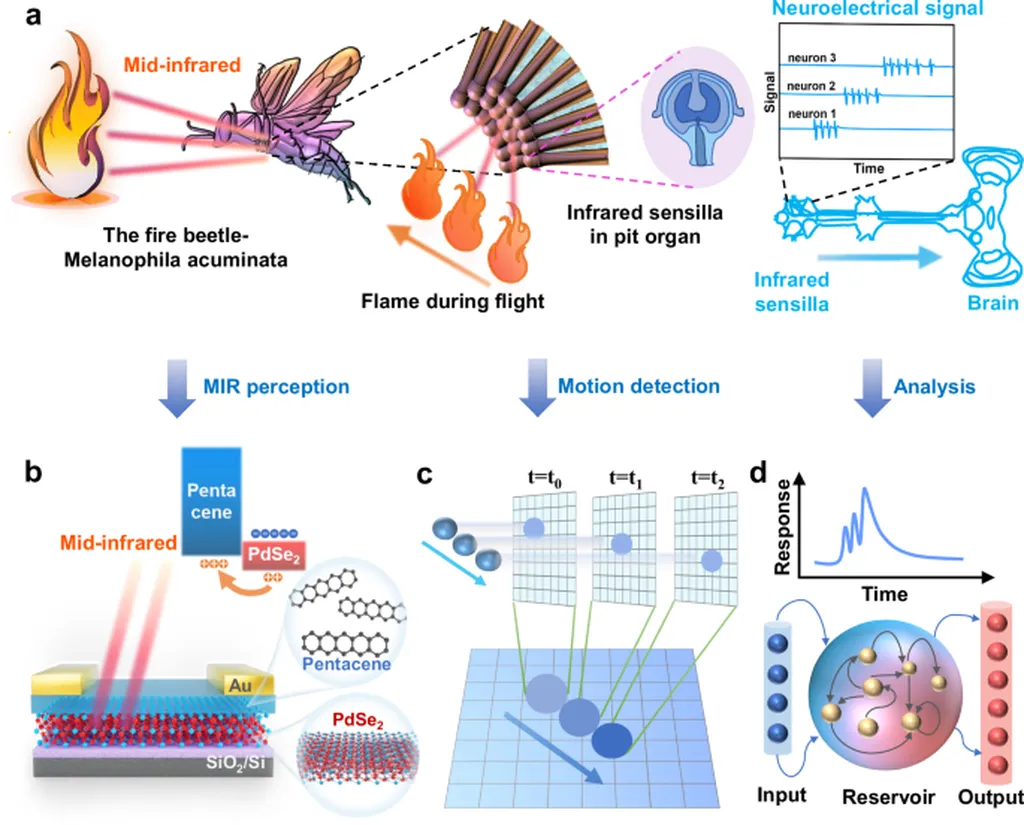In a groundbreaking development poised to revolutionize energy-efficient data processing, researchers have made significant strides in integrating near-infrared (NIR) light detection with artificial synaptic devices. This advancement, spearheaded by Minjun Choi from the Department of Materials Science and Engineering at Seoul National University of Science and Technology, opens new avenues for neuromorphic vision systems, which mimic the human brain’s neural networks to process information more efficiently than traditional computing architectures.
Neuromorphic systems have long been touted for their potential to overcome the limitations of conventional von Neumann architectures, which suffer from data transfer bottlenecks and high energy consumption. By integrating NIR optical detection with synaptic computation, these artificial synapses can process data in real-time, adapting and learning as they go. This capability is particularly valuable for applications such as night vision, biomedical imaging, and autonomous sensing, where traditional systems fall short.
“NIR wavelengths provide critical information that visible light cannot offer due to their high permeability and low scattering properties,” explains Choi. “This makes them ideal for scenarios where visibility is compromised, such as in low-light conditions or through opaque materials.”
The research, published in the Journal of Physics Materials (JPhys Materials), explores the fundamental biological synaptic properties essential for artificial synapse operation. It delves into the NIR-responsive materials used in these devices and the principles that enable their synaptic properties, with a particular focus on device architectures. The study also examines practical applications, including night vision systems and robotic control systems, highlighting the potential commercial impacts for the energy sector.
One of the most compelling aspects of this research is its potential to shape future developments in energy-efficient data processing. By mimicking biological neural processing, these artificial synapses could significantly reduce the energy consumption of data centers and other high-performance computing environments. This could lead to substantial cost savings and a reduced environmental footprint for the energy sector.
However, the field is not without its challenges. The study also addresses the remaining hurdles facing the development of NIR-detectable artificial synapses, proposing future research directions to overcome these obstacles. As the technology continues to evolve, it is poised to play a pivotal role in advancing neuromorphic vision systems and other innovative applications.
This research not only pushes the boundaries of what is possible in data processing but also underscores the importance of interdisciplinary collaboration in driving technological innovation. As we look to the future, the integration of NIR detection with artificial synaptic devices holds immense promise for a wide range of industries, from healthcare to autonomous systems. The work of Minjun Choi and his team is a testament to the power of scientific inquiry and its potential to transform our world.

